|

|
|
| |
|
China Oil Painting Direct
|
|
100% hand painted, 100%
cotton canvas,
100% money back if not satisfaction.
|
|
|
|
ART WORKS
INDEX
A B C D E F G H I J K L M N O P Q R S T U V W X Y Z
|
|
ARTISTS
INDEX
A B C D E F G H I J K L M N O P Q R S T U V W X Y Z
|
|
|
|
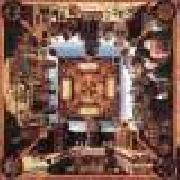 |
BEHAM, Hans Sebald 
|
|
German Northern Renaissance Engraver, 1500-1550
Hans Sebald Beham (1500 ?C 1550) was a German printmaker who did his best work as an engraver, and was also a designer of woodcuts and a painter and miniaturist. He is one of the most important of the "Little Masters", the group of German artists making old master prints in the generation after Durer.
Beham is best known as a prolific printmaker, producing approximately 252 engravings, 18 etchings and 1500 woodcuts, including woodcut book illustrations. He worked extensively on tiny, highly detailed, engravings, many as small as postage stamps, placing him in the German printmaking school known as the "Little Masters" from the size of their prints. These works he produced and published himself, whilst his much larger woodcuts were mostly commissioned work. The engravings found a ready market among German bourgeois collectors, but were not much seen in Italy. He also made prints for use as playing cards, wallpaper, coats of arms, and designs for other artists, including many designs for stained or painted glass. He also illuminated two prayer books and painted a table top (now in the Louvre ) for Cardinal Albrecht, Archbishop of Mainz.
|
|
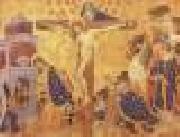 |
BELLE-CHOSE, Henri 
|
|
Flemish Gothic Era Painter, active ca.1415-1440
South Netherlandish painter. He was one of the artists who came from the South Netherlands to work for the French royal family. On 23 May 1415 he succeeded Jean Malouel as court painter and Valet de Chambre to John the Fearless, Duke of Burgundy, in Dijon, and he may already have been connected with Malouel's workshop. On 5 November 1415 Bellechose was paid for painting four small wooden pillars with angels, which were placed around the high altar of Notre-Dame, Dijon. On 19 May 1416 the duke authorized the purchase of materials for Bellechose to complete two panels, one of the Martyrdom of St Denis and another showing the Death of the Virgin, for the Charterhouse of Champmol. Bellechose also carried out decorative work, including painting banners for the Duke's castle of Talant near Dijon in 1416 and coats of arms for the funeral of John the Fearless in 1419. On 5 April 1420 Bellechose was appointed court painter to Philip the Good, successor to John the Fearless. His first known commissions were again of a decorative nature, including work for the funerals of Margaret of Bavaria, wife of John the Fearless, in 1423 and of Catherine of Burgundy, daughter of an earlier Duke of Burgundy, Philip the Bold, in 1425 and for the marriage of Philip the Good's sister Agnes of Burgundy in 1424. During these years he had eight assistants and two apprentices; travelling artists, including some from German territory, also worked in his shop on a temporary basis. Around this time he married Alixant Lebon, daughter of a Dijon notary. On 21 November 1425 Philip the Good ordered an altarpiece of the Virgin venerated by John the Fearless and Philip the Good, accompanied by SS John the Evangelist and Claude, for the chapel of the castle at Saulx-le-Duc in Burgundy. Bellechose painted three statues for the new entrance gate to the palace in Dijon in 1426. In August 1429 he received an important commission for St Michel, Dijon, to make an altarpiece with Christ and the Twelve Apostles and an antependium showing the Annunciation. Exactly a year later his name appears for the last time in the ducal accounts.
|
|
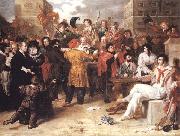 |
Benjamin Robert Haydon 
|
|
English Romantic Painter, 1786-1846
1786-1846.was an English historical painter and writer. Haydon was born at Plymouth. His mother was the daughter of the Rev. Benjamin Cobley, rector of Dodbrooke, near Kingsbridge, Devon. Her brother, General Sir Thomas Cobley, was renowned for his part in the siege of Ismail. Benjamin's father, a prosperous printer, stationer and publisher, was well known in Plymouth. Haydon, an only son, at an early date showed an aptitude for study, which was carefully fostered by his mother. At the age of six he was placed in Plymouth grammar school, and at twelve in Plympton St Mary School, the same school where Sir Joshua Reynolds had received most of his education. On the ceiling of the school-room was a sketch by Reynolds in burnt cork, which Haydon loved to sit and look at. Whilst at school he had some thought of adopting the medical profession, but he was so shocked at the sight of an operation that he gave up the idea. Reading Albinus inspired him with a love for anatomy; but from childhood he had wanted to become a painter. Full of energy and hope, he left home, on 14 May 1804, for London, and entered the Royal Academy as a student. He was so enthusiastic that Henry Fuseli asked when he ever found time to eat. Aged twenty-one (1807) Haydon exhibited, for the first time, at the Royal Academy, The Repose in Egypt, which was bought by Thomas Hope the year after for the Egyptian Room at his townhouse in Duchess Street. This was a good start for the young artist, who shortly received a commission from Lord Mulgrave and an introduction to Sir George Beaumont. In 1809 he finished his well-known picture of Dentatus, which, though it increased his fame, resulted in a lifelong quarrel with the Royal Academy, whose committee had hung it in a small side-room instead of the great hall. That same year, he took on his first pupil, Charles Lock Eastlake, later destined to become one of the great figures of the British art establishment. In 1810 his financial difficulties began when the allowance of £200 a year from his father was stopped. His disappointment was embittered by the controversies in which he now became involved with Beaumont, for whom he had painted his picture of Macbeth, and Richard Payne Knight, who had denied the beauties as well as the money value of the Elgin Marbles.
|
|
 |
Benoit Hermogaste Molin 
|
|
painted Painting of Maria Adelaide, wife of Victor Emmanuel II, King of Italy in 1848
|
|
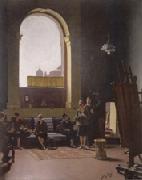 |
Bernard Hall 
|
|
Artist, teacher, Director of Melbourne??s National Gallery and Felton Bequest advisor
English-born Australian, 1859-1935
was an English-born Australian artist. Hall was born at Liverpool, England. The son of a Liverpool broker of the same family as Captain Basil Hall, writer of books of travel, he was well educated and grew up in an atmosphere of culture. He studied painting at South Kensington, Antwerp and Munich, and worked for some to years in London. He exhibited at the Royal Academy and was one of the original members of the New English Art Club. On the death of George Frederick Folingsby in 1891 he was appointed director of the National Gallery of Victoria at Melbourne, and began his duties in March 1892. He held the position for 43 years aria many of the well-known painters of Australia were trained by him in the gallery painting school. He also acted as adviser to the trustees for purchases for the gallery and art museum, and when the munificent bequest of Alfred Felton was received his responsibilities were much increased. In 1905 he went to England to make purchases under this bequest, and although the amount then placed in his hands was comparatively small, he made better use of what was available than any subsequent adviser of his time. After his return he was expected to advise on everything submitted that might find a place in an art museum and, although he never claimed to be an expert in all these things, he supplemented his knowledge with hard reading and made cornparatively few mistakes. Hall's own paintings were usually interiors, nudes, or paintings of still life. He was often represented at the Victorian Artists' and other societies' exhibitions and held several one-man shows, but he was kept so busily employed as director and adviser, that his paintings had to be done at week ends and during vacations. In February 1934 he again went to London as adviser to the Felton trustees and died there on 14 February 1935. He was married twice in 1894 to Miss E. M. Shuter and in 1912 to Miss G. H. Thomson, who with one son by the first marriage and two sons and a daughter by the second marriage, survived him. Hall was a tall man of distinguished appearance, courteous but slightly austere in manner, with strong convictions, and little sense of compromise. He was extremely conservative in almost everything from his art to his politics.
|
|
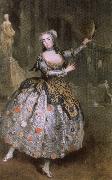 |
billy higgins 
|
|
Famous artist
|
|
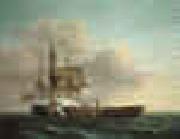 |
Birch, Thomas 
|
|
English-born American Painter, 1779-1851
American painter of English birth. He was one of the most important American landscape and marine painters of the early 19th century. He moved to America in 1794 with his father William Birch (1755-1834), a painter and engraver from whom he received his artistic training. The family settled in Philadelphia, where William, armed with letters of introduction from Benjamin West to leading citizens of that city, became a drawing-master. Early in their American careers both Birches executed cityscapes, several of which were engraved. Thomas contributed a number of compositions to The City of Philadelphia in the State of Pennsylvania, North America, as it Appeared in the Year 1800 (1800), a series of views conceived by the elder Birch in obvious imitation of comparable British productions. An English sensibility is also apparent in the many paintings of country estates executed by father and son in the early 19th century These compositions, along with such portrayals of important public edifices in and near Philadelphia as Fairmount Waterworks
|
|
 |
BLES, Herri met de 
|
|
Flemish Northern Renaissance Painter, ca.1510-1550
Flemish painter. Both van Mander and Lampsonius recorded Bouvines as his birthplace, although Guicciardini gave it as Dinant. The identification of Herri met de Bles with Herry de Patinir, who was a master of the Antwerp Guild of St Luke in 1535, is generally accepted. He may have been related to Joachim Patinir, possibly a nephew. In the Pictorum aliquot celebrium Germaniae Inferioris effigies (Antwerp, 1572) of Domenicus Lampsonius, Henricus Blesius Bovinati pictori is portrayed aged 40, sporting the type of clothing and beard that were fashionable in 1550.
|
|
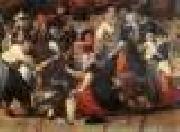 |
BOL, Hans 
|
|
Flemish Northern Renaissance Painter, 1534-1593
Hans Bol (1534?C1593), Flemish artist, received his early training from his two uncles who were also painters. He then was the apprentice to a Mechelen watercolorist and tempera painter at the age of fourteen. Because Bol??s watercolors became so widely reproduced, he began creating miniatures on parchment. The technique earned him many international clients and a good income. In addition, Bol also produced several oil paintings, illuminated manuscripts, drawings, and engravings. He preferred to create landscapes, mythological, allegorical and biblical scenes, and genre paintings.
|
|
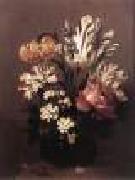 |
BOLLONGIER, Hans 
|
|
Dutch painter, Haarlem school (b. ca. 1600, Haarlem, d. ca. 1675, Haarlem)
Hans Gillisz. Bollongier or Boulenger (Haarlem, 1600-idem, 1645) was a still life Dutch painter.
|
|
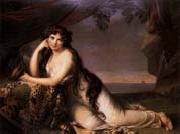 |
BONE, Henry 
|
|
British, 1755-1834,Cornish enamel painter, was born at Truro. He was much employed by London jewellers for small designs in enamel, before his merits as an artist were well known to the public. In 1800 the beauty of his pieces attracted the notice of the Royal Academy, of which he was then admitted as an associate; in 1811 he was made an academician. Up to 1831 he executed many beautiful miniature pieces of much larger size than had been attempted before in England; among these his eighty-five portraits of the time of Queen Elizabeth, of different sizes, from 5 by 4 to 13 by 8 in. are most admired. They were disposed of by public sale after his death. His Bacchus and Ariadne, after Titian, painted on a plate, brought the great price of 2200 guineas. He had 2 sons, who were also notable enamallists: Henry Pierce Bone & Robert Trewick Bone.
|
|
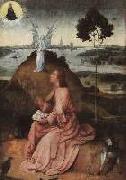 |
BOSCH, Hieronymus 
|
|
Netherlandish Northern Renaissance Painter, ca.1450-1516
Bosch produced several triptychs. Among his most famous is The Garden of Earthly Delights. This painting depicts paradise with Adam and Eve and many wondrous animals on the left panel, the earthly delights with numerous nude figures and tremendous fruit and birds on the middle panel, and hell with depictions of fantastic punishments of the various types of sinners on the right panel. When the exterior panels are closed the viewer can see, painted in grisaille, God creating the Earth. These paintings have a rough surface from the application of paint; this contrasts with the traditional Flemish style of paintings, where the smooth surface attempts to hide the fact that the painting is man-made.
Bosch never dated his paintings and may have signed only some of them (other signatures are certainly not his). Fewer than 25 paintings remain today that can be attributed to him. Philip II of Spain acquired many of Bosch's paintings after the painter's death; as a result, the Prado Museum in Madrid now owns several of his works, including The Garden of Earthly Delights.
|
|
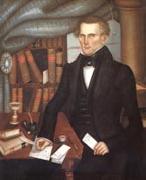 |
Bundy Horace 
|
|
American portraits and landscapes painter, 1814-1883
|
|
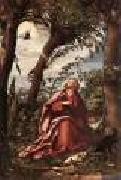 |
BURGKMAIR, Hans 
|
|
German Northern Renaissance Painter, 1473-1531
German artist, famous for his paintings and woodcuts. A friend of D??rer, he studied in Strasburg and Venice, as well as Augsburg. He executed the woodcuts for Weißkunig and some of those in Teuerdank. His greatest works are the altar-pieces in Munich and Augsburg.
|
|
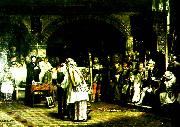 |
C. G. hellquist 
|
|
|
|
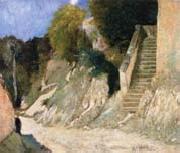 |
Carl Fredrik Hill 
|
|
Swedish Painter, 1849-1911,Swedish painter and draughtsman. He grew up in the university city of Lund, where his father was a mathematics professor. Despite severe opposition from his father, he studied landscape painting at the Konstakademi in Stockholm (1871-2), under Johan Edvard Bergh and Per Daniel Holm (1835-1903). He also frequently copied Dutch Old Masters, particularly Jacob van Ruisdael. After seeing the work that Alfred Wahlberg had sent home from Paris, Hill began to abandon his initial approach to form and colour, and he left for Paris in November 1873. His most important experience there was his encounter with the painting of Jean-Baptiste-Camille Corot: 'Corot has discovered a new world, because he has discovered a new way of looking at the old', he wrote in a letter. Other contemporary French painters Hill admired were Alexandre-Gabriel Decamps, Charles-Fran?ois Daubigny, Jean-Franeois Millet and Theodore Rousseau. From Courbet he learnt how to use colour to suggest the surface texture of stone quarries and gravel hills. In Barbizon in 1874 and 1875 Hill met the Hungarian painters Laszlo Pael and Mihaly von Muncacsy. His paintings of this time, for example Autumn Landscape, Evening: Fontainebleau (1875; Malm?, Kstmus.), are characterized by their dark 'luminarism' and their debt to Corot's later works.
|
|
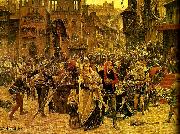 |
carl gustaf hellqvist 
|
|
|
|
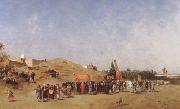 |
Carl Haag 
|
|
1820 - 1915
German painter, active in Britain. After studying in Nuremberg, he painted miniature portraits in Munich and Brussels. In 1847 he went to London to study English techniques of watercolour painting and evolved a method that he claimed achieved the 'brilliancy of oil painting, combined with the tender-sweetness of water-colours' . From 1850 he exhibited at the Society of Painters in Water-Colours and was elected a full member in 1853.
|
|
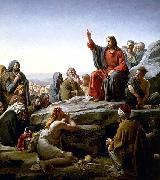 |
Carl Heinrich Bloch 
|
|
(May 23, 1834 C February 22, 1890) was a Danish painter.
He was born in Copenhagen and studied with Wilhelm Marstrand at the Royal Danish Academy of Art (Det Kongelige Danske Kunstakademi) there.
His early work featured rural scenes from everyday life. From 1859 to 1866, Bloch lived in Italy, and this period was important for the development of his historical style.
His first great success was the exhibition of his "Prometheus Unbound" in Copenhagen in 1865. After the death of Marstrand, he finished the decoration of the ceremonial hall at the University of Copenhagen.
He was then commissioned to produce 23 paintings for the Chapel at Frederiksborg Palace. These were all scenes from the life of Christ which have become very popular as illustrations. The originals, painted between 1865 and 1879, are still at Frederiksborg Palace.
|
|
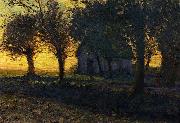 |
Carl Hessmert 
|
|
1869-1928
|
|
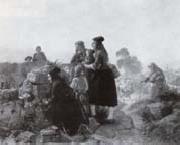 |
Carl Hubner 
|
|
1814-1879, was a German genre painter. He was born at Konigsberg, and was a pupil of the Dusseldorf Academy. Hubner's works were especially popular in Holland and in North America, where he was received with enthusiasm in 1874.
|
|
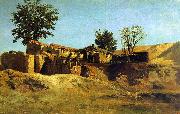 |
Carlos de Haes 
|
|
Spanish
1826-1898
Carlos de Haes Galleries
Spanish painter of Belgian birth. In 1835 he moved with his parents to M?laga, where he studied under the court portrait painter and miniature painter Luis de la Cruz y R?os (1776-1853). In 1850 he returned to Belgium and studied with the landscape painter Joseph Quineaux (1822-95). During his studies there and on his travels in France, Germany and Holland, he became acquainted with contemporary Realist trends. He returned to Spain in 1855, becoming a naturalized Spaniard, and the following year he exhibited numerous landscapes at the Exposici?n Nacional, Madrid, to much acclaim. In 1857 he won the competition for the fourth chair of landscape painting at the Escuela de Bellas Artes in Madrid with View of the Royal Palace from the Casa de Campo (1857; Madrid, Real Acad. S Fernando), a work showing characteristics of the Barbizon and Fontainebleau landscape schools. In 1860 he was elected Acad?mico de m?rito at the Real Academia de S Fernando in Madrid. By 1861 he was officiating and drawing up the regulations for the landscape competitions for aspiring pensionnaires. Consequently plein-air works came to be required in place of the previous tradition of submitting historical landscapes executed in the studio, a practice that discouraged the study of nature. De Haes suggested that only final corrections should be made in the studio, an attitude that indicates his timid initiation and acceptance of Realist trends.
|
|
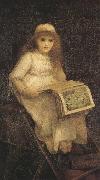 |
charles edward halle 
|
|
French painter, born in 1846 and died in 1919
|
|
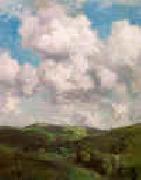 |
Charles Harold Davis 
|
|
1856-1933
He was born at Amesbury, Massachusetts. A pupil of the schools of the Boston Museum of Fine Arts, he was sent to Paris in 1880. Having studied at the Acad??mie Julian under Jules Joseph Lefebvre and Gustave Boulanger, he went to Barbizon and painted much in the forest of Fontainebleau under the traditions of the men of thirty.
In 1890, Davis returned to the U.S., settling in Mystic, Connecticut. He shifted to Impressionism in his style, and took up the cloudscapes for which he became best-known. He eventually became a leading figure in the art colony that had developed in Mystic, and founded the Mystic Art Association in 1913.
He became a full member of the National Academy of Design in 1906, and received many awards, including a silver medal at the Paris Exhibition of 1889.
He is represented by important works in the Metropolitan Museum of Art, New York; the Corcoran Gallery of Art, Washington; the Pennsylvania Academy, Philadelphia, and the Boston Museum of Fine Arts.
|
|
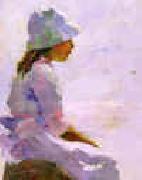 |
Charles Hawthorne 
|
|
1872-1930
Charles Webster Hawthorne (January 8, 1872 ?C November 29, 1930) was an American portrait and genre painter and a noted teacher who founded the Cape Cod School of Art in 1899.
He was born in Maine, started as an office-boy in a stained-glass factory in New York, studied at night school and with Henry Siddons Mowbray and William Merritt Chase, and abroad in both Holland and Italy.
When he was eighteen, Hawthorne went to New York and studied painting at the National Academy of Design and the Art Students League. Among his teachers were Frank Vincent DuMond and George de Forest Brush. But Hawthorne declared that the most dominant influence in his career was William Merritt Chase, with whom he worked as both a pupil and assistant. Both men were naturally talented teachers and figurative painters who were drawn to rich color and the lusciousness of oil paint as a medium. Chase passed on a Munich tradition of tone values and tone painting, and Hawthorne learned all he could.
While studying abroad in Holland as Chase's assistant, Hawthorne was influenced to start his own school of art.
His winters were spent in Paris and New York City, his summers at Provincetown, Massachusetts, the site of his school. While in Paris Hawthorne became a full member of the French Soci??t?? Nationale des Beaux-Arts in 1917.
|
|
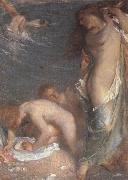 |
Charles Hazelwood Shannon 
|
|
English painter, printmaker and collector , 1863-1937
English artist, was born at Sleaford in Lincolnshire, the son of the Rev. Frederic Shannon. He attended the City and Guilds of London Art School (then known as South London School of Technical Art, formerly Lambeth School of Art), and was subsequently considerably influenced by his lifetime partner Charles Ricketts[2] and by the example of the great Venetians. In his early work he was addicted to a heavy low tone, which he abandoned subsequently for dearer and more transparent colour. He achieved great success with his portraits and his Giorgionesque figure compositions, which are marked by a classic sense of style, and with his etchings and lithographic designs. The Dublin Municipal Gallery owns his circular composition "The Bunch of Grapes" and "The Lady with the Green Fan" (portrait of Mrs Hacon). His "Study in Grey" is at the Munich Gallery, a "Portrait of Mr Staats Forbes" at Bremen, and a "Souvenir of Van Dyck" at Melbourne. One of his most remarkable pictures is "The Toilet of Venus" in the collection of Lord Northcliffe. Several of his portrait works are on display in the National Portrait Gallery in London. Complete sets of his lithographs and etchings have been acquired by the British Museum and the Berlin and Dresden print rooms. He was awarded a first-class gold medal at Munich in 1895 and a first-class silver medal in Paris in 1900.
|
|
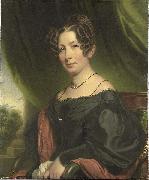 |
Charles Howard Hodges 
|
|
(1764, Portsmouth - July 24, Amsterdam), was a British painter active in the Netherlands during the French occupation of 18th and early 19th century.
Charles Howard Hodges had visited Amsterdam in 1788; after a two-year stay in Dublin, he moved with his family to The Hague in 1792. In Amsterdam, he worked as an artist, specialized in the mezzotint technique and pastel. In 1797, he and his family moved to Amsterdam, where he lived with his teacher Johann Friedrich August Tischbein at the Prinsengracht Ne 205. There, he became a famous painter of portraits; he painted over 700 portraits of the rich and famous of that time. He was also an engraver, printer, art dealer and a member of the Amsterdam art club Felix Meritis.
He is well-known for the fact that he painted all the leaders of the Netherlands during the Napoleonic Period, -a turbulent period in Dutch history, since the Netherlands went through 5 different political systems: stadtholder Willem V of the Republic of the United Netherlands, Grand Pensionary Rutger Jan Schimmelpenninck of the Batavian Republic, King Louis Bonaparte (King of Holland), Emperor Napoleon Bonaparte and king William I of the Netherlands. The only known portrait of Sebald Justinus Brugmans was made by him. A design for the honorary cross of the Order of the Union was rejected by Louis Bonaparte.
Hodges advised the Dutch government in 1815 with the return of thousands of works of art, which were confiscated by the French in 1795 from several collections, including the Gallery of Prince William V (the first museum open to the public in the Netherlands), and the several collections of the previous stadtholders. Not all the stolen art was returned from Paris, and it is said that several pieces are still held in the Louvre up to this day.
Most of the over 700 portraits by Hodges are made in the early 19th century, the earlier works in pastel, and later work in oil paint. Several of these portraits can be found in the Rijksmuseum in Amsterdam, in museums and castles and in royal and private collections.
Charles Howard Hodges was father and teacher to James Newman Hodges, een lesser painter who worked in the Rijksmuseum when it was still located in the Trippenhuis in Amsterdam.
|
|
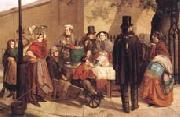 |
Charles Hunt 
|
|
British genre scenes painter , 1803-1877
|
|
 |
Charles Napier Hemy 
|
|
English Painter, 1841-1917, British painter, He was born at Newcastle-on-Tyne, of a musical family. He was trained in the Government School if Design, Newcastle, in the Antwerp academy and in the studio of Baron Leys. He returned to London in the 1870s. In 1881, he moved to Falmouth, Cornwall. He produced some figure subjects and landscapes, but is best known by his marine paintings. He was elected an Associate of the Royal Academy in 1898 and an Academician in 1910, Associate of the Royal Society of Painters in Water Colours in 1890 and member in 1897. Two of his paintings, "Pilchards" (1897) and "London River" (1904), are in the Tate collections. He had two brothers who were also artists, Thomas Hemy and Bernard Hemy. He died in Falmouth on September 30, 1917.
|
|
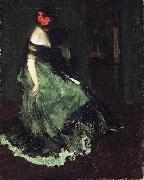 |
Charles Webster Hawthorne 
|
|
(January 8, 1872 - November 29, 1930) was an American portrait and genre painter and a noted teacher who founded the Cape Cod School of Art in 1899.
He was born in Lodi, Illinois and his parents returned to Maine, raising him in the state where Charles' father was born.
|
|
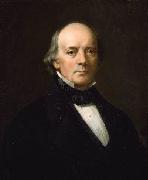 |
Chester Harding 
|
|
painted Self Portrait in 1843
|
|
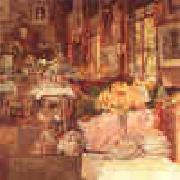 |
Childe Hassam 
|
|
1859-1935
Childe Hassam Locations
Frederick Childe Hassam (b. October 17, 1859, Dorchester, Boston, Massachusetts ?C d. August 27, 1935, East Hampton, New York) was a prominent and prolific American Impressionist painter, noted for his urban and coastal scenes. Along with Mary Cassatt and John Henry Twachtman, Hassam was instrumental in promulgating Impressionism to American collectors, dealers, and the museums. He produced over 3,000 paintings, watercolors, etchings, and lithographs in his career, and was a founding member of The Ten, an influential group of American artists of the early 20th century. His most famous works are the ??Flag?? paintings, completed during World War I.
Hassam (pronounced HASS'm;) (known to all as Childe, pronounced like child) was born in his family home in a suburb of Boston in 1859. His father Frederick was a cutlery merchant and descended from a long line of New Englanders, while his mother Rosa was a native of Maine. He demonstrated an interest in art early in his life. He had his first lessons in drawing and watercolor while attending the Mather public school, but his parents took little notice of his nascent talent.
A disastrous fire in November 1872 wiped out much of Boston??s commercial district including his father??s business. To help out the family, Hassam dropped out of high school and his father lined up a job for him in the accounting department of publisher Little Brown & Company. His poor aptitude for figures, however, convinced his father to allow him to pursue an art career, and Hassam found employment with George Johnson, a wood engraver. He quickly proved an adept draftsman (??draughtsman?? in the Boston directory) and he produced designs for commercial engravings, such as images for letterheads and newspapers. Around 1879, Hassam began creating his earliest oil paintings but his preferred medium was watercolors, mostly outdoor studies.
|
|
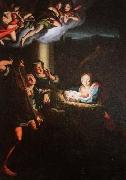 |
Christoph Franz Hillner 
|
|
painted Holy night in 1767
|
|
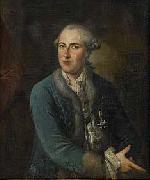 |
Christopher Hieronymus Johansen 
|
|
(1718 -1781 ) - Painter
|
|
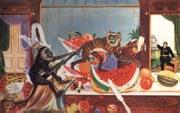 |
Church Henry 
|
|
American , b.1836 d.1908
|
|
 |
Claes Dircksz.van er heck 
|
|
Alkamaar 1571-after 1649
|
|
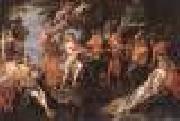 |
CLERCK, Hendrik de 
|
|
Flemish Baroque Era Painter, ca.1570-1630
Flemish painter and draughtsman. In 1587 he was working in Rome with the Brussels painter Frans van de Kasteele. That he subsequently lived in Brussels is confirmed by documentary evidence and by his status as court painter to the governors of the southern Netherlands. Stylistically, de Clerck's work (both paintings and drawings) is close to that of the Antwerp late Mannerist Marten de Vos, traditionally thought to have been his teacher, but it is possible that he was apprenticed to Joos van Winghe in Italy. He was later a member of the Brussels painters' guild, where from 1601 to 1611 Jan van Overstraeten was registered as his pupil. It was in 1594 that de Clerck was appointed court painter in Brussels, first to Archduke Ernest. In 1596, after the Archduke's death, his brother Emperor Rudolf II arranged for de Clerck to stay on as court painter in the service of the new Archdukes, Albert and Isabella. In 1609 de Clerck and Wenceslas Cobergher were commissioned to decorate the ceiling of the oratorium in the archducal palace in Brussels
|
|
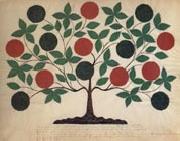 |
Cohoon Hannah 
|
|
American painter
b.1788 d.1864
|
|
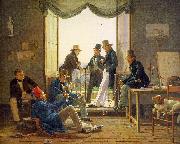 |
Constantin Hansen 
|
|
Danish
1804-1880
Constantin Hansen Galleries
Danish painter. In 1816 he entered the Kongelige Akademi for de Sk?nne Kunster, Copenhagen, intending to study architecture; however he later became attracted to painting and worked under C. W. Eckersberg from 1828 to 1833. Around the middle of the 1820s he started developing an individual style of portraiture, which had matured by 1830. He often used his sisters and friends as models; using simple costumes, poses and compositions, he managed to endow his pictures with the intimacy and warmth that mark the Danish Golden Age. The Artist's Sisters Signe and Henriette Reading a Book (1826; Copenhagen, Stat. Mus. Kst) is a fine example of his combination of natural observation with Neo-classical idealization. Under Eckersberg, who encouraged both, he strengthened his natural flair for painting serene architectural views of Copenhagen.
|
|
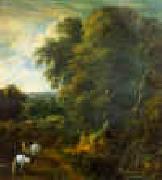 |
Corneille Huysmans 
|
|
1648-1727
Flemish
Corneille Huysmans Galleries
|
|
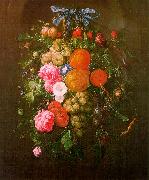 |
Cornelis de Heem 
|
|
Dutch Baroque Era Painter, 1631-1695
Son of Jan Davidsz. de Heem. He spent a great deal of his life in Antwerp, where he was taught by his father. Cornelis also worked in Utrecht in 1667, in nearby IJsselstein in 1676 and in The Hague from 1676 for more than ten years. His best works approach the quality of his father, particularly in works executed during the decade starting in 1655. Cornelis still-lifes can be distinguished by daring colour harmonies, sometimes with a strong blue. His compositions are often simpler: fruit-pieces, floral bouquets, festoons and garlands and sumptuous still-lifes, only occasionally in large formats. His technique changed from a more painterly to a more graphic style.
|
|
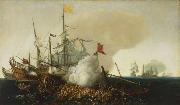 |
Cornelis Hendriksz Vroom 
|
|
(1591, Haarlem - buried September 16, 1661, Haarlem) was a Dutch Golden Age landscape painter.
According to the RKD he was the son of the painter Hendrick Cornelisz Vroom, the older brother of Frederick and Jacob, and the father of the painter Jacob Cornelisz Vroom.[1] He became a member of the Haarlem Guild of St. Luke in 1634.
According to Houbraken in 1718, who repeated a list of names from Theodorus Schrevelius's 1648 book on Haarlem called Harlemias, he was the son of Hendrick Cornelisz Vroom and a good landscape painter of Haarlem along with "Joh. Jakobsz.", who was in Italy for many years, "Nicol. Zuyker", Gerrit Claesz Bleker, Salomon van Ruysdael, and Reyer van Blommendael.
|
|
 |
Cornelis Holsteyn 
|
|
(1618 - 2 December 1658) was a Dutch Golden Age painter from Haarlem.
According to the RKD he was a painter of historical allegories, portraits, and interior decorations, trained by his father Pieter Holsteyn I. According to Houbraken, his father was a glass painter, and thus was trained for glass painting, but the market in glass painting not being what it was, he turned his hand to painting canvas. Houbraken felt he received less for a painting than he deserved, because his work was of a very high quality. He describes a Triumph of Bacchus, and a Lycurgus, which was painted for the Amsterdam Orphanage.
According to the RKD, he moved to Amsterdam with his brother Pieter Holsteyn II in 1647, became poorter there in 1652, and was betrothed there on Christmas eve, 1654. He was buried in the Nieuwe Kerk on December 2, 1658 from his home on the Rozengracht. Houbraken claimed he had been fit until his sudden death by Hartvang, or heart-attack.
|
|
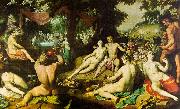 |
Cornelisz van Haarlem 
|
|
1562-1638
Dutch
Cornelisz van Haarlem Galleries
Dutch painter and draughtsman. He came from a wealthy family. During the Spanish siege and occupation of Haarlem (1572-7), his parents moved elsewhere, leaving their son and large house in the protection of the painter Pieter Pietersz. (1540/41-1603), who became Cornelis's teacher. In 1579 Cornelis travelled to France by sea, but the journey terminated at Rouen because of an outbreak of plague. He then became a pupil of Gillis Congnet in Antwerp, with whom he stayed for one year. In 1580-81 he returned permanently to Haarlem, and in 1583 he received his first official commission from the city, a militia company portrait, the Banquet of the Haarlem Civic Guard (Haarlem, Frans Halsmus.). Around 1584 he befriended Hendrick Goltzius and Karel van Mander, with whom he is said to have established a kind of academy.
|
|
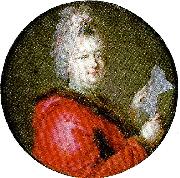 |
cornelius hoyer 
|
|
Cornelius Höyer, född 1741, död 1804, var en dansk målare.
Höyer studerade dels i Köpenhamn, dels i Paris och Italien samt var redan 1769, då han återkom hem, en ansedd konstnär inom sitt fack, miniatyrmåleriet. 1770 blev han hovminiatyrmålare och medlem av konstakademien. Från 1777 var han dennas sekreterare.
|
|
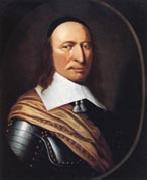 |
Couturier Henri 
|
|
Active probably Leyden,mid-17th century
|
|
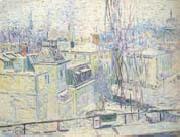 |
Curt Herrmann 
|
|
German, 1854-1929
|
|
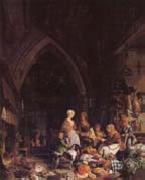 |
Cuvelier Hippolythe 
|
|
Saint-Omer 1803-1876
|
|
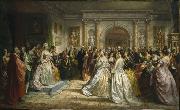 |
Daniel Huntington 
|
|
(October 4, 1816 -April 19, 1906), American artist, was born in New York City, New York, the son of Benjamin Huntington, Jr. and Faith Trumbull Huntington; his paternal grandfather was Benjamin Huntington, delegate at the Second Continental Congress and First U.S. Representative from Connecticut.
In 1835 he studied with Samuel F.B. Morse, and produced "A Bar-Room Politician" and "A Toper Asleep." Subsequently he painted some landscapes on the Hudson river, and in 1839 went to Rome. On his return to America he painted portraits and began the illustration of The Pilgrim's Progress, but his eyesight failed, and in 1844 he went back to Rome.
Returning to New York around 1846, he devoted his time chiefly to portrait-painting, although he painted many genre, religious and historical subjects. From 1851 to 1859 he was in England. He was president of the National Academy from 1862 to 1870, and again in 1877-1890.
|
|
 |
Daniel van Heil 
|
|
1604-1662
Flemish
Daniel van Heil Galleries
|
|
|
|
|
|
|
|
|
| Wholesale China Oil Painting Wholesale Oil Painting China Xiamen Portrait Reproduction on canvas Chinese Oil Painting Wholesale USA Oil Painting |
|
|
|
|